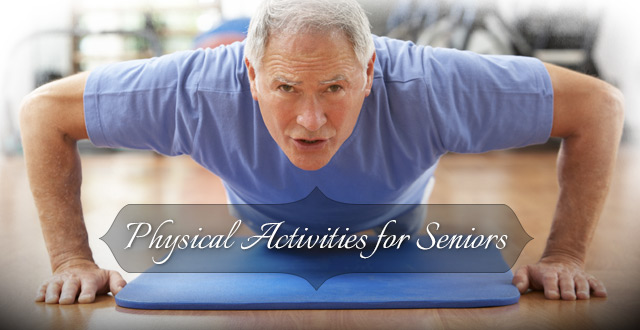It’s widely known that physical activity leads to better health. Physical activity is even more important for seniors, according to a new paper published by the New Zealand Ministry of Health.
“Physical inactivity is the fourth-leading cause of global mortality from non-communicable diseases behind high blood pressure, smoking, and high glucose levels.” ~ World Health Organization.
The medical community worldwide recognizes the importance of balanced nutrition and physical activities in maintaining golden health after the age of 65.
To turn this widely acknowledged view into evidence-based research, the New Zealand Government, Ministry of Health commissioned and funded a literature review, conducted by the New Zealand Guidelines Group (NZGG) and University of Western Sydney (UWS). This research collated recent evidence (2004 to 2010) related to the risks and benefits of physical activity on the country’s population over 65 years of age.
The findings of the literature review were published in The Guidelines on Physical Activity for Older People (aged 65 years and over). According to this well-researched document, “physical activity, along with good nutrition, is a key contributor to healthy living.”
This document has provided health practitioners with realistic recommendations on the type, intensity, and frequency of physical activity required to prevent certain types of terminal diseases and to maintain solid health after 65.
Physical activities: The right types
The available body of evidence seems to imply a small dose of regulated, physical activity with a sharp reduction in sedentary behavior—can help in preventing diseases and managing chronic health conditions. The recommended physical activities for older people, provided in the Guidelines, are directly based on evidence gathered in the literature review, and also based on recommendations from the World Health Organization, Australia, Canada, the United Kingdom, and the United States of America.
The following types of physical activities have been prescribed for seniors: Aerobic activities of different intensities, resistance activities, flexibility activities, and balance activities like yoga, or dancing.
Benefits of physical activities
The key findings of the literature review in relation to benefits of physical activities are:
- increased muscle strength, flexibility, balance, and coordination
- Prevention from premature mortality from any falls, stroke, or heart disease
- Prevention from osteoarthritis, certain types of cancers, obesity, type 2 diabetes, and depression
- Improved sleeping, enhanced quality of life, and general well-being
- increased levels of social interaction
Recommended physical activities:
People eager to follow the regimen are advised to consult a physician before starting out. Also it is better to start off slowly, and gradually build up to the target physical activity levels which can be:
- Aerobic activity of vigorous intensity 15 minutes per day
- Aerobic activity of moderate intensity five days per week, 30-minutes per day
- Combined aerobic activities of moderate and vigorous intensity, in sessions of 10 minutes at a time
- Three sessions of flexibility and balance activities per week
- Two sessions of muscle-strengthening activities per week.
Additional workouts for enhanced health benefits
People eager to follow the regimen are advised to consult a physician before starting out. Also, it is better to start off slowly, and gradually build up to the target physical activity levels:
- 60 minutes of aerobic activity (moderate-intensity) for 5 days- per-week
- 30 minutes of aerobic activity (vigorous-intensity) for 5 days-per-week
- 90 minutes of combined moderate-and vigorous-intensity activities per week
Recommendations for frail individuals above 65
People eager to follow the regimen are advised to consult a physician before starting out. Also it is better to start off slowly, and gradually build up to the target physical activity levels of:
- Reduction of sedentary behavior and increase of physical activity
- Mixture of low-impact aerobic, balance, resistance, and flexibility activities
- Vitamin D tablets after consulting with a physician
Regardless of age or physical ability, keeping active and in motion is key to life long health.

